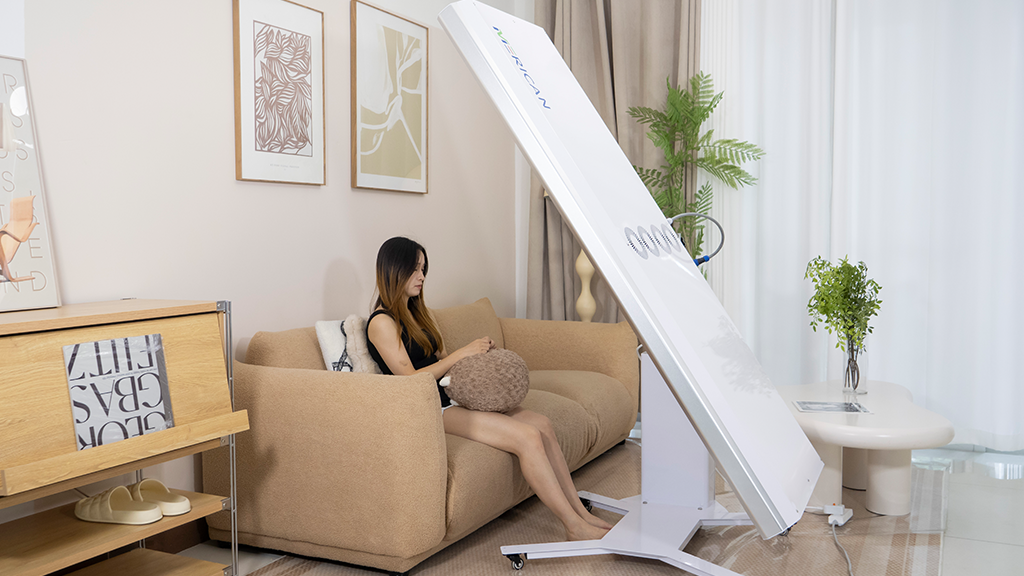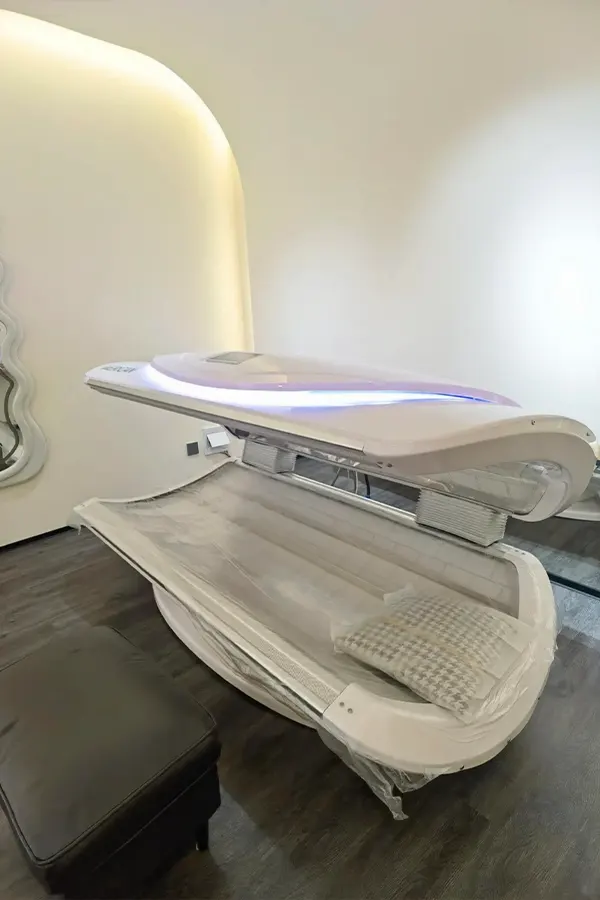If you have been researching online for innovative ways to improve your health, you may have come across the growing interest in red light therapy beds. These intriguing devices promise a range of benefits, from improving skin tone to enhancing muscle recovery, all by bathing in red light. But what exactly is a red light bed, and does it really live up to the hype? This article will provide an overview of red light therapy beds and their associated benefits.
What is red light therapy?
What is a red light therapy bed?
Before we delve into the specifics of red light therapy beds, it is crucial to understand the fundamentals of red light therapy (RLT). So, what is it? In essence, RLT involves the application of low-level red light wavelengths to stimulate the skin. In contrast to UV rays, which are known to cause tanning, this light is specifically designed to promote healing and rejuvenation. Initially discovered by NASA to support plant growth in space, red light therapy has evolved significantly over the years. It is now used in various medical and cosmetic settings, thanks to its ability to repair tissue, reduce inflammation, and even boost collagen production.
How does Red Light Therapy work?
The mechanism by which this light interacts with the skin to produce health benefits is not yet fully understood. The mechanism of action involves the interaction of red light with the body. When the light penetrates the skin, it reaches the mitochondria within the cells, which are often referred to as the powerhouses of the cell. This energises the mitochondria, which in turn produces more energy. This process can be likened to the effect of a caffeine boost, enabling cells to function more efficiently. This boost in energy helps your body repair damage, reduce inflammation, and rejuvenate skin cells. In essence, red light therapy promotes self-healing mechanisms within the body.
What is a Red Light Therapy Bed?
Red Light Therapy Bed MB
Now that we have covered the basics, let us move on to the star of the show: the red light therapy bed. So, what is a red light bed? Imagine a tanning bed, but instead of giving you a sun-kissed glow, it bathes you in healing red light. These beds are designed to provide full-body exposure to red light therapy, making it convenient to target larger areas at once. Whether your goals are to alleviate sore muscles, enhance your skin, or simply boost your overall well-being, a single session of red light therapy can deliver tangible results.
Mechanism of Red Light Therapy Bed
Red Light Wavelength
Wavelengths and Light Spectrum
Not all light is created equal. The effectiveness of a red light bed depends largely on the wavelengths it emits. Typically, these LED therapy beds use light in the 600 to 900 nanometer range, which is optimal for penetrating the skin and stimulating cellular activity. This range includes both red and near-infrared light, each offering unique benefits. Red light is ideal for surface-level treatments like skin rejuvenation, while near-infrared light penetrates deeper into muscles and joints.
The mechanism by which red light penetrates the skin is of particular interest.
You may be interested to know how light can penetrate the skin without causing damage. The answer lies in the non-invasive nature of red and near-infrared light. In contrast to UV rays, which can cause burning and damage to the skin, red light gently penetrates up to a few millimeters, targeting cells beneath the surface without causing harm. This process is comparable to basking in the sun’s warmth without the risk of sunburn.
Cellular Impact: Mitochondrial StimulationAt the cellular level, red light therapy works by stimulating the mitochondria. When these “powerhouses” absorb red light, they become more efficient at producing adenosine triphosphate (ATP), the energy currency of the cell. This increased ATP leads to greater energy availability for cells to perform essential functions such as tissue repair, inflammation reduction, and promotion of overall cellular health.
Additionally, it has been observed to boost collagen production, a vital protein for maintaining youthful and firm skin. Red light therapy can help reverse this process by stimulating fibroblasts, the cells responsible for collagen production. Regular sessions in a red light bed can lead to smoother, more youthful skin over time.
How to Use a Red Light Therapy Bed?
How Often to Use RLT?
Consistency is key when it comes to red light therapy. For most people, using the bed 2 to 3 times a week yields the best results. Typically, sessions last between 10 to 20 minutes, depending on your goals. For skin rejuvenation, shorter, more frequent sessions (about 3 to 5 times per week) are recommended. For deeper tissue healing or muscle recovery, longer sessions less frequently (2 to 3 times per week) may be more effective.
Pre- and Post-Treatment Care
To maximize the benefits of your red light therapy bed, it’s important to follow some simple pre- and post-treatment care steps. Before your session, make sure your skin is clean and free of any lotions or oils, as these can block the light. After your session, hydrate your skin with a moisturizer to lock in the benefits and help your skin recover.
Combining Red Light Therapy with Other Treatments
Red light therapy is versatile and can be easily combined with other treatments. For instance, you can use it alongside topical skincare treatments to enhance their absorption and effectiveness. It’s also a great complement to physical therapy for muscle recovery, helping to reduce pain and speed up healing.


